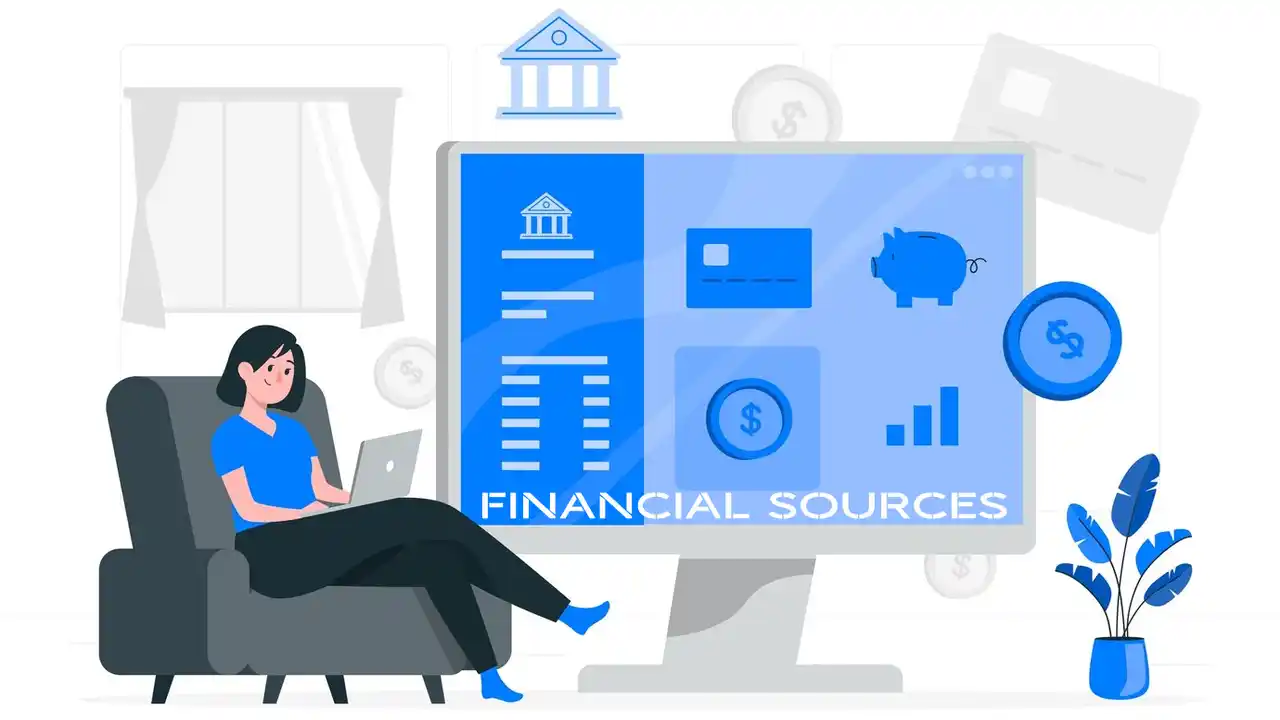Most new businesses get their start with a loan from a bank or other lending institution. It will also attract new investors, who are either private individuals or larger organizations, to the business. These steps are taken in order to secure the initial funding needed to cover the expenses associated with launching a new business. To produce commodities or provide services, one needs capital, which can be monetary or in the form of other valuable assets. People, physical things, and monetary exchange mechanisms are all examples of capital. Some examples of capital include money, skilled workers, workshop space, office space, tools, machinery, and other equipment. business financing will be covered in-depth in this article, along with various examples for your convenience.
Various loan kinds utilized for commercial purposes are all part of business financing. Some loans have a shorter repayment period, typically little more than a month or two. Expensive products, like real estate or tools, are often financed with a longer term. Many people fall somewhere in the middle, naturally.
Meaning of Business Financing
In the absence of a strong balance sheet like Apple’s, it is highly probable that you will seek business capital in due course. Sometimes, even huge companies need a quick influx of cash to take care of their immediate obligations. Getting the right financial strategy is one of the most important things for small companies. Borrowing money from the incorrect place might lead to the loss of business or payment terms that hinder long-term growth for your organization.
Help with the cost of doing company, buying products, or investing is known as financing. Loaning money to businesses, consumers, and investors is how financial institutions like banks make a living. Businesses rely on financing to acquire goods and services that would be out of reach without it. Another way of looking at it is that borrowing is a way to use the TVM to start projects that will get financing later on. In a market, some participants may have spare cash to put into investments that could yield a return, while others will be looking to add to their savings. This creates a market for money.
Business Financing Examples
As long as the company is expected to be successful, it is typically possible to obtain loan finance at a reduced effective cost. You can sell a quarter of your firm to a neighbor for $40,000 or get a 10% interest loan from a bank if you run a small business and need $40,000 in cash.
For the sake of argument, let’s say your business turns a profit of $20,000 next year. Interest, often called the cost of debt finance, would add up to $4,000 if you went ahead and borrowed the money from the bank. You would make a profit of sixteen grand from this. You could have avoided debt and interest payments entirely by opting for equity financing instead. But your neighbor would possess the other 25% of your profit, so you could only retain 75%. Consequently, out of a total of $20,000, your earnings would amount to just $15,000—or 75% of the total.
How does Business Financing Work?
Through company credit cards and lines of credit, your lender will grant you a fixed amount of credit. You should be patient as the credit takes some time to reflect in your account. The money is yours to spend whenever you choose, up to the limit. Just like with a term loan, you’ll have to pay back the principal and interest by a certain date.
When business owners encounter periods of low sales or other temporary disruptions to their cash flow, business credit solutions are a great way to bridge the gap. In the business world, financing operations encompass all dealings between a corporation and its investors and creditors. Financial operations are one of the three parts that make up a cash flow statement for a business. Investing and operating are the other two categories. Cash flows are ebb and flow for a company.
If you would rather not take on debt to finance your organization, you should seek out backers who are willing to risk their own money for your business concept. In most cases, you’ll need to provide purchasers with some kind of benefit in return for their payment. Furthermore, in return for the capital they put in, buyers get a stake in the company they back.
Consequently, capital from individuals and venture capital firms are the two main sources of equity funding. Additionally, as a financial incentive, people may offer stock shares or loan notes to help you raise capital for your firm. The chance to attend a private event is one example of an Indiegogo incentive that is desirable in and of itself but does not cost a lot of money.
FAQ
What are the Effects of Financing?
A positive item will include in the finance section of the cash flow statement if a company acquires funds through loan financing. The balance sheet reflects increased obligations due to borrowing, with debt finance comprising principal to repay bondholders and lenders.
What is the Purpose of Business Financing?
It is common practice for business owners to use capital to finance expansion or to attract new customers. The owners will find other ways to pay for these things, so they won’t utilize their valuable operating capital. Maintaining manageable amounts of company debt is a goal for most of them.
How does Financing Affect a Business?
Invest in resources, hire staff, advertise, and innovate. Insufficient capital leads to operational challenges and hinders profit generation.
Final Words
You can get money for your new business by applying for a loan. Your familiarity with company finance concepts may impact your choices regarding the sale of stock and the incurrence of debt. A business can approach banks and investors for funding after it has established itself and is handling its own day-to-day finances. While the company does occasionally count on its consumers to generate revenue, its customers are the primary source of revenue. Surplus funds from profitable activities likely reinvest in the firm, fueling its expansion and growth. There is no shortage of options for businesses looking to raise capital for ambitious projects or boost their bottom line. We’ve explained this in business financing guide. I hope this information was useful to you. To stay informed about investment portfolio subject, make sure to read more.






